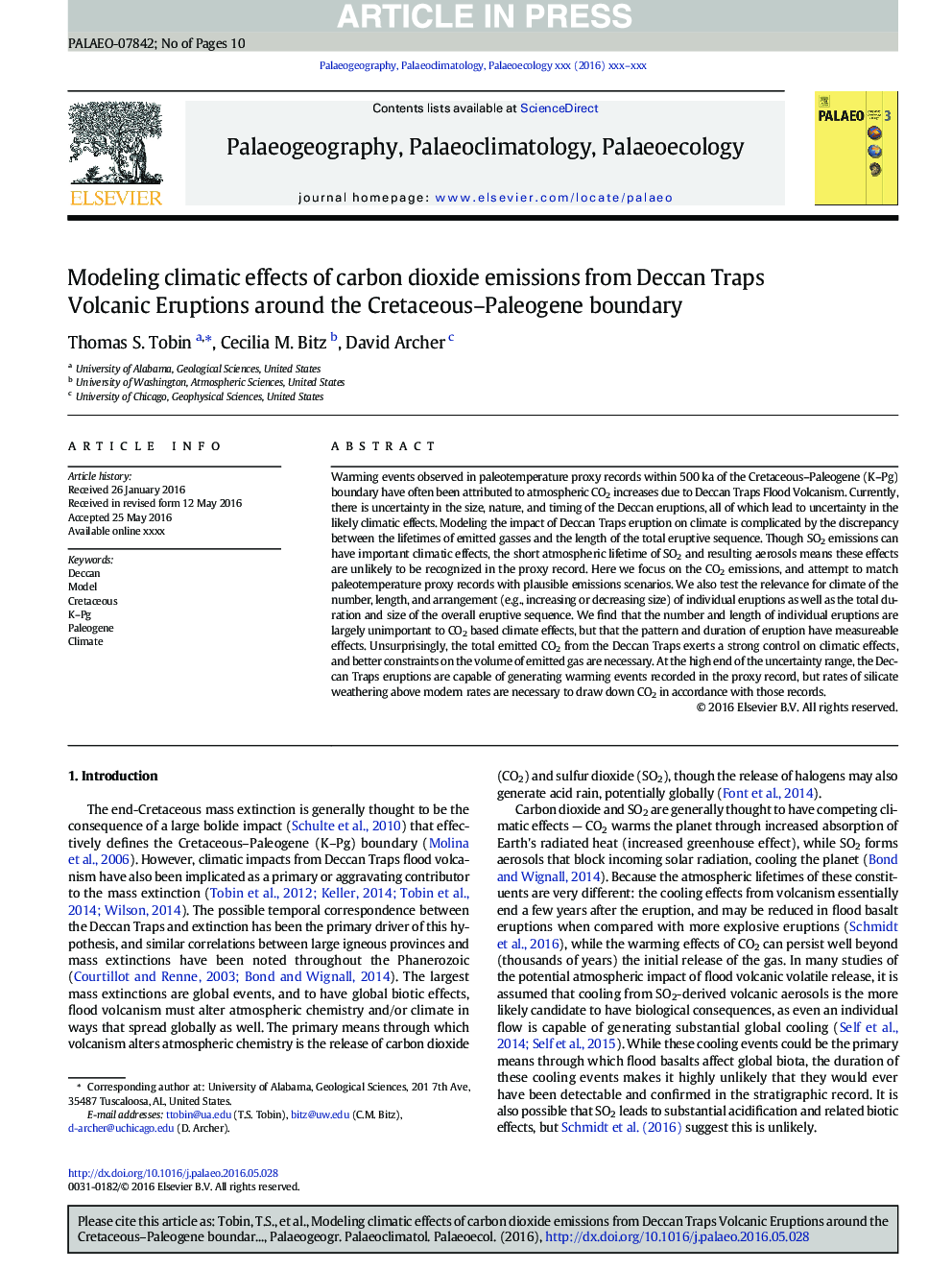| کد مقاله | کد نشریه | سال انتشار | مقاله انگلیسی | نسخه تمام متن |
|---|---|---|---|---|
| 5755824 | 1622114 | 2017 | 10 صفحه PDF | دانلود رایگان |
عنوان انگلیسی مقاله ISI
Modeling climatic effects of carbon dioxide emissions from Deccan Traps volcanic eruptions around the Cretaceous-Paleogene boundary
ترجمه فارسی عنوان
مدل سازی اثرات اقلیمی انتشار دی اکسید کربن از فوران آتشفشان های دگن تپه در اطراف مرز کرتاسه-پالوژن
دانلود مقاله + سفارش ترجمه
دانلود مقاله ISI انگلیسی
رایگان برای ایرانیان
موضوعات مرتبط
مهندسی و علوم پایه
علوم زمین و سیارات
فرآیندهای سطح زمین
چکیده انگلیسی
Warming events observed in paleotemperature proxy records within 500Â kyr of the Cretaceous-Paleogene (K-Pg) boundary have often been attributed to atmospheric CO2 increases due to Deccan Traps flood volcanism. Currently, there is uncertainty in the size, nature, and timing of the Deccan eruptions, all of which lead to uncertainty in the likely climatic effects. Modeling the impact of Deccan Traps eruption on climate is complicated by the discrepancy between the lifetimes of emitted gasses and the length of the total eruptive sequence. Though SO2 emissions can have important climatic effects, the short atmospheric lifetimes of SO2 and resulting aerosols mean these effects are unlikely to be recognized in the proxy record. Here we focus on the CO2 emissions, and attempt to match paleotemperature proxy records with plausible emissions scenarios. We also test the relevance for climate of the number, length, and arrangement (e.g., increasing or decreasing size) of individual eruptions as well as the total duration and size of the overall eruptive sequence. We find that the number and length of individual eruptions are largely unimportant to CO2-based based climate effects, but that the pattern and duration of eruption have measureable effects. Unsurprisingly, the total emitted CO2 from the Deccan Traps exerts a strong control on climatic effects, and better constraints on the volume of emitted gas are necessary. At the high end of the uncertainty range, the Deccan Traps eruptions are capable of generating warming events recorded in the proxy record, but rates of silicate weathering above modern rates are necessary to draw down CO2 in accordance with those records.
ناشر
Database: Elsevier - ScienceDirect (ساینس دایرکت)
Journal: Palaeogeography, Palaeoclimatology, Palaeoecology - Volume 478, 15 July 2017, Pages 139-148
Journal: Palaeogeography, Palaeoclimatology, Palaeoecology - Volume 478, 15 July 2017, Pages 139-148
نویسندگان
Thomas S. Tobin, Cecilia M. Bitz, David Archer,
